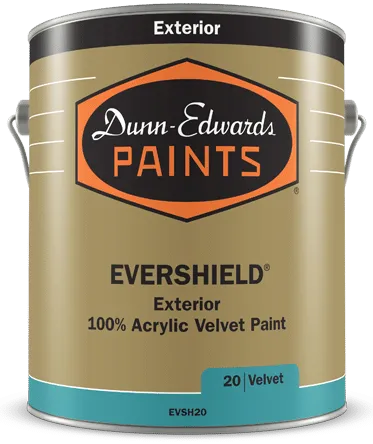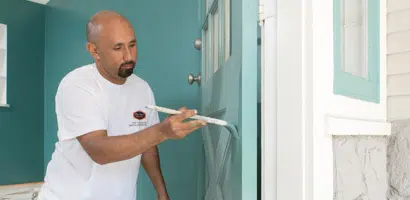Tips for Cold Weather Painting
09/30/2021 | Dunn Edwards |
Chilled Out Property Maintenance
Don't let cool weather slow down your team

Pumpkin latte season is here. With it comes shorter days, chillier nights, and a slower pace. But colder weather doesn't mean you have to put your properties on hold. Here are five tips to help your maintenance team stay busy all season long.
Plan ahead, especially for exterior jobs.
Autumn is a great time to check for loose roof tiles, seal openings that could attract critters, clean gutters, and yes... even paint. Exterior painting can be done in cooler temperatures, so long as a few parameters are met. Check your local weather report and schedule teams for outside painting jobs only when conditions are favorable. As temperatures cool, be sure to read paint labels and technical bulletins. Many cold-weather latex paints will cure at temperatures below 50 degrees Fahrenheit, but all Dunn-Edwards latex paints are formulated to cure down to 40 degrees Fahrenheit, with some going as low as 35 degrees Fahrenheit. Be aware that other environmental factors could affect paint's performance: a lower substrate temperature, high humidity, high dew point, and drastic temperature changes during the curing phase can all wreak havoc. The first 48 hours of drying time are going to be the most critical, with air temperature and substrate temperature needing to meet the minimum recommendations while the paint cures. Again, planning ahead is key.
Go premium.
When selecting paint, consider that ultra-premium products like Dunn-Edwards EVERSHIELD® outperform others in terms of applied hide, alkali burnout resistance, and surfactant leaching resistance. Having fewer coats to apply and fewer problems to solve means that your team can finish jobs faster, before the cold weather really kicks in. The same goes for interior products such as Dunn-Edwards ultra-premium, ultra-low VOC SUPREMA®, which offers exceptional hide with superior durability, washability and block resistance. Going ultra-premium inside means that properties will be ready to show sooner due to the need to apply fewer coats, combined with the fact that ultra-low VOC products tend to have less of an odor.
Chase the sun.
During the summer, your team probably followed the shade in an effort to slow exterior paint drying times and stay out of the heat as much as possible. Now they can use the reverse technique to stay warm and give exterior paint jobs the best chance at maintaining their optimum temperature for curing. Exterior paints should be applied during the warmest, driest time of day, between 10 am and 2 pm, with teams starting where the sun is shining, and then following the sunlight around the property as it moves. When the sun dips and temperatures start dropping, it's time to focus on clean up and prep work for the next day's job.
Head inside.
Fall is a time when we all get a little more introspective. We think more about being cozier and focusing on quiet tasks. As your tenants move from outdoor spaces to inside ones, you might notice an increase in maintenance requests. This is a great time for your team to go inside too: getting ahead of interior upgrades, common area repainting, and addressing back burner maintenance requests.
Shift your focus.
Even on days when it's too cold or wet to do maintenance, you can still keep your property management team moving forward. Take a moment to review your maintenance goals, connect with tenants and clients, enroll employees in important safety and compliance training, and restock supplies. Before you know it, your team will be back at its regular maintenance routine with little time or energy to do much else. So take advantage of poor weather conditions when you can.
For more information on cold weather painting and other technical considerations, check out our library of technical bulletins.















